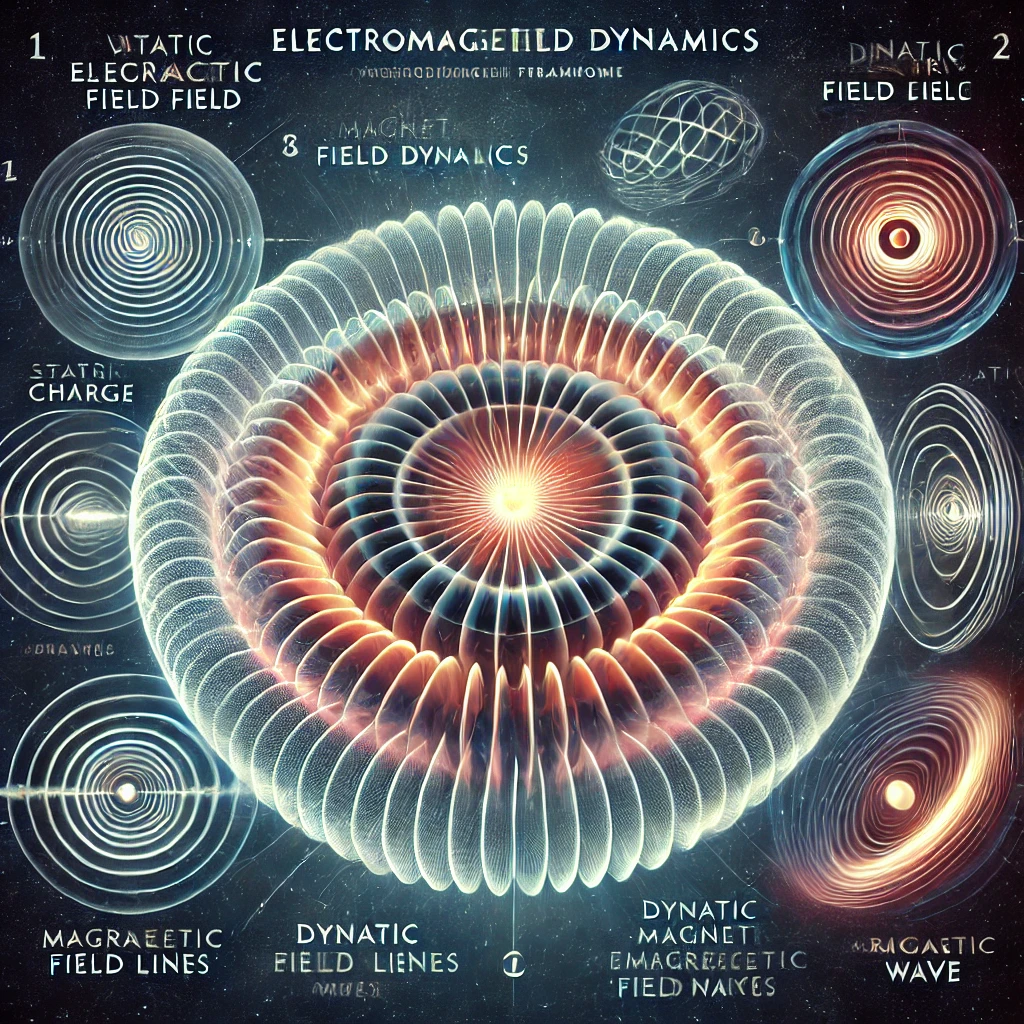Redefining Electromagnetism Through Vibrational Field Dynamics

In the Vibrational Field Dynamics (VFD) framework, electromagnetism is reimagined as a phenomenon that arises from the interactions of oscillating vibrational fields. Unlike traditional views that depict electric and magnetic forces as separate entities, VFD presents electromagnetism as an outcome of resonant patterns within the vibrational field. Here, we delve into this unique perspective on electromagnetism, supported by accessible analogies to illustrate each concept.
Electromagnetic Fields as Oscillating Vibrational Patterns
In VFD, each particle or charge emits a unique vibrational frequency that creates a local influence in space. When these charges move, they alter their local vibrational frequencies, producing wave-like oscillations that propagate through the field. These oscillations give rise to the electric and magnetic fields we observe.
Analogy: Think of charges as pebbles tossed into a pond. Each pebble creates ripples that overlap, forming interference patterns that represent the electric and magnetic fields. The movement of these ripples around each other is what we perceive as electromagnetism in action.
Electric Fields as Static Resonant States
From the VFD standpoint, an electric field emerges as a stable vibrational frequency surrounding a stationary charge. This steady vibration exerts an influence on nearby particles, aligning them with the charge’s vibrational state and forming the electric field.
Analogy: Imagine a tuning fork emitting a steady tone. The sound waves represent the electric field, extending uniformly outward as long as the fork stays still. Similarly, a charge’s electric field remains stable and unchanging while it remains stationary, affecting other charges in its range.
Magnetic Fields as Dynamic Vibrational Alignments
In VFD, magnetic fields arise from the movement of charges, which creates dynamic shifts in the surrounding vibrational field. As the charge moves, it disrupts the static pattern, inducing a circulating resonance that forms what we recognize as the magnetic field.
Analogy: Picture a rolling drumstick on a drum. The initial strike creates sound (like an electric field), but as the stick rolls, it generates a rotating rhythm—a magnetic field. This rotation pattern forms around the moving charge, giving rise to the magnetic field we observe.
Electromagnetic Waves as Coupled Vibrational Resonances
In VFD, electromagnetic waves are viewed as coupled oscillations of electric and magnetic fields that travel through the vibrational field. When an electric field oscillates, it induces a corresponding oscillation in the magnetic field, creating a self-sustaining wave that propagates.
Analogy: Think of two interconnected swings in motion. When you push one swing, it drives the other, creating a continuous back-and-forth motion. Similarly, in VFD, oscillating electric and magnetic fields drive each other forward, forming a traveling wave that moves through space.
Photons as Coherent Packets of Vibrational Energy
In the VFD model, light (photons) is seen as coherent packets of vibrational energy with specific frequency signatures. Photons are not point particles in the traditional sense but are instead fractal structures of vibrational energy that move coherently through the field, producing oscillating electric and magnetic fields as they travel.
Analogy: Picture a stone skipping across water. Each skip creates a coherent ripple pattern, moving in a wave. In VFD, photons move similarly, as packets of energy that maintain a consistent vibrational resonance as they propagate through the field.
Summary: Electromagnetism in VFD
In Vibrational Field Dynamics, electromagnetism is interpreted as an outcome of resonant interactions within a unified field. Here’s how VFD redefines each component of electromagnetism:
- Electric Fields: Stable vibrational states produced by stationary charges, exerting a steady influence on nearby particles.
- Magnetic Fields: Dynamic vibrational patterns caused by moving charges, creating a circulating field pattern.
- Electromagnetic Waves: Coupled oscillations of electric and magnetic fields, traveling as waveforms through the vibrational field.
- Photons as Vibrational Packets: Light as coherent vibrational energy packets, carrying specific frequencies and oscillating electric and magnetic fields.
This perspective highlights electromagnetism as a unified phenomenon of resonant interactions within the vibrational field. By interpreting electromagnetism through resonance and frequency, VFD deepens our understanding of the interconnectedness of matter, vibration, and the fundamental forces that shape the universe.



Leave a Reply